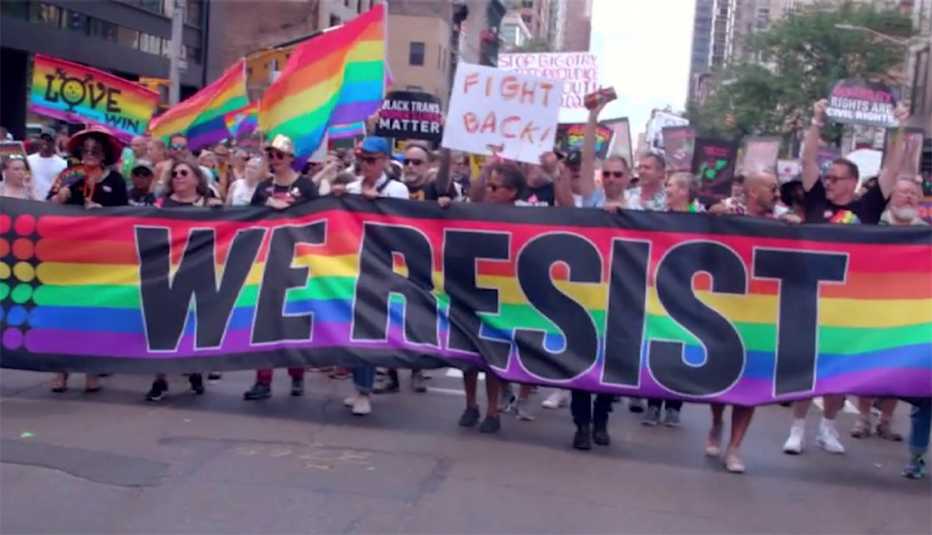Staying Fit


More like an indie film festival than a traditional docuseries, Pride (FX on Hulu) is really six films about U.S. gay history from 1950 to now, by leading LGBTQ directors. You can watch each as a standalone documentary, but they're so vividly personal, you'll be tempted to binge them.
"Pride takes you through the modern history of the LGBTQ struggle — the challenges, wars, triumphs and icons that got us to where we are now,” says Village Voice writer Michael Musto, a longtime and vibrant chronicler of gay culture, who's interviewed in Pride. “The series covers the rise of trans visibility, the downtown ‘80s club culture, the oppression of HIV and the accompanying rise in homophobia, and many other topics. It's eye opening and head spinning."


AARP Membership— $12 for your first year when you sign up for Automatic Renewal
Get instant access to members-only products and hundreds of discounts, a free second membership, and a subscription to AARP the Magazine.
What's different — and outstanding — about ‘Pride'
The series is not conventionally encyclopedic and straightforward, like a Ken Burns project, which means it's light on some events you'd expect to hear plenty about, like the 1969 Stonewall riot, and it's got some surprises. “We didn't just tell the stories that have already been told,” says Alex Smith, who codirected the stellar episode “1980s: Underground,” which draws on 1,200 hours of amazing footage of New York's underground gay scene shot by Nelson Sullivan from 1982 to 1989, when only insiders (or Musto readers) knew who RuPaul was.
Don't Miss This: 12 Great LGBTQ Movies to Stream During Pride Month
There wasn't such a wealth of footage of gay life in the 1950s, so the series’ first episode — “1950s: People Had Parties” — uses actors in dramatic re-creations, for example, to tell the story of Madeleine Tress, a government worker fired for being gay, who went on to be a San Francisco lawyer arguing Supreme Court cases. You've heard of the ‘50s Red Scare, but there was also a Lavender Scare that prompted authorities to fire 10,000 gay people like Tress. Pride covers the era's “Pervert Elimination Campaign,” which swept up the gay son of U.S. Sen. Lester Hunt of Wyoming. Political enemies such as Sen. Joseph McCarthy used the scandal to blackmail Hunt, who committed suicide in his office.
And yet the ‘50s were also a time when World War II veteran Christine Jorgensen became famous for changing her sex and wound up not in prison but in the movies, an influential celebrity who pioneered acceptance of trans people. In a deep irony, the world of public persecution fueled a private world — a nod to the episode's title.
"It made the party better,” Smith says, “because if you are repressing parts of who you are in order to fit in, in order to not get arrested, fined and jailed, when you find a space where you can actually be yourself surrounded by other people free to be themselves, it's an explosion of freedom, explosion of creativity. Nobody wants to be held back — but when you let yourself go, it's going to be a bigger burst of energy and joy.” Smith loves to quote famed director John Waters: “The best parties were the ones that were about to be busted.” Part of the gift of this footage, Smith says, is to witness people “basking in the freedom of not constantly being watched and reported on. And it's a very special energy that doesn't exist anymore."

































































More on Entertainment
10 Top-Notch Novels Featuring LGBTQ Characters
Find engrossing fiction that explores gender identity, the meaning of family and more